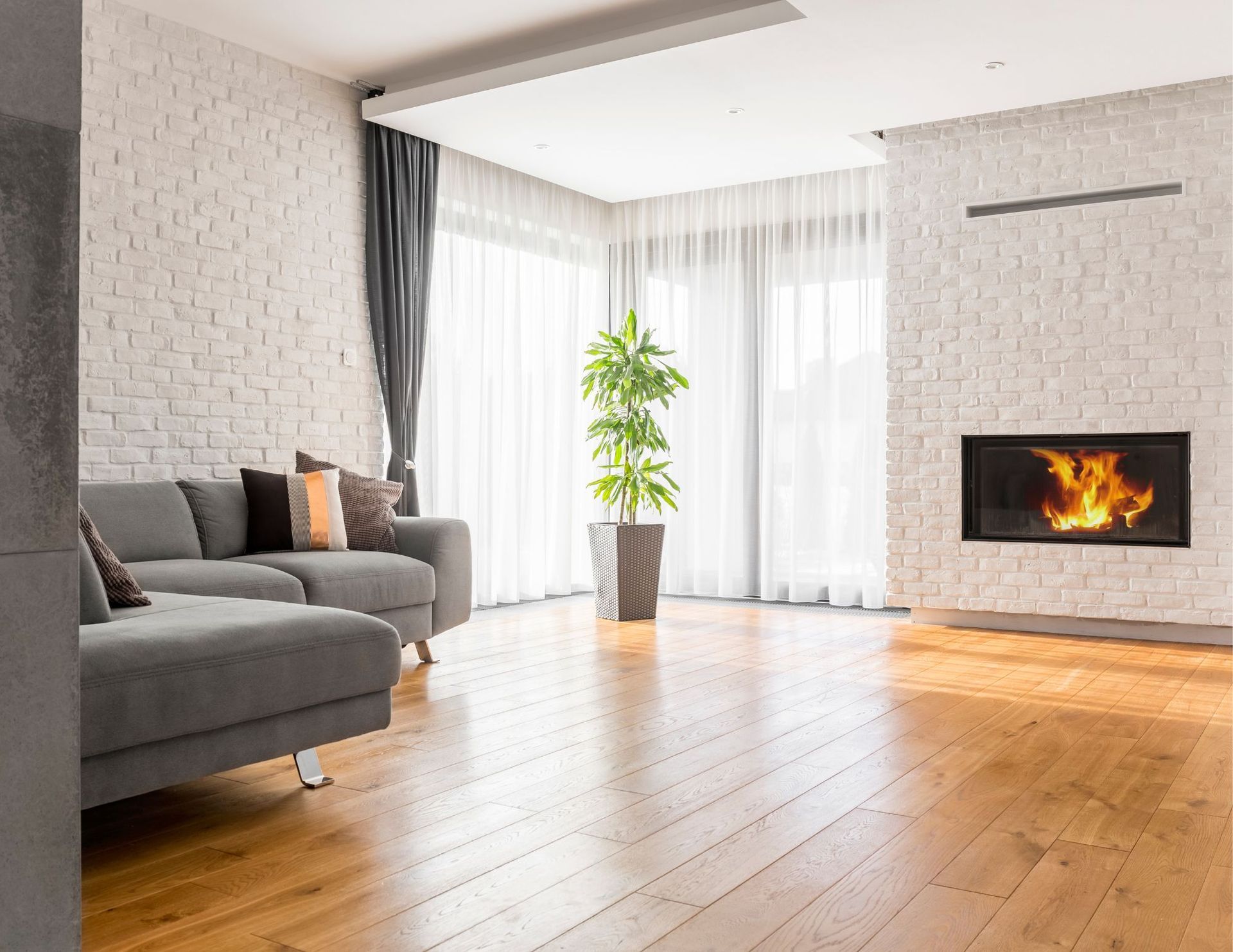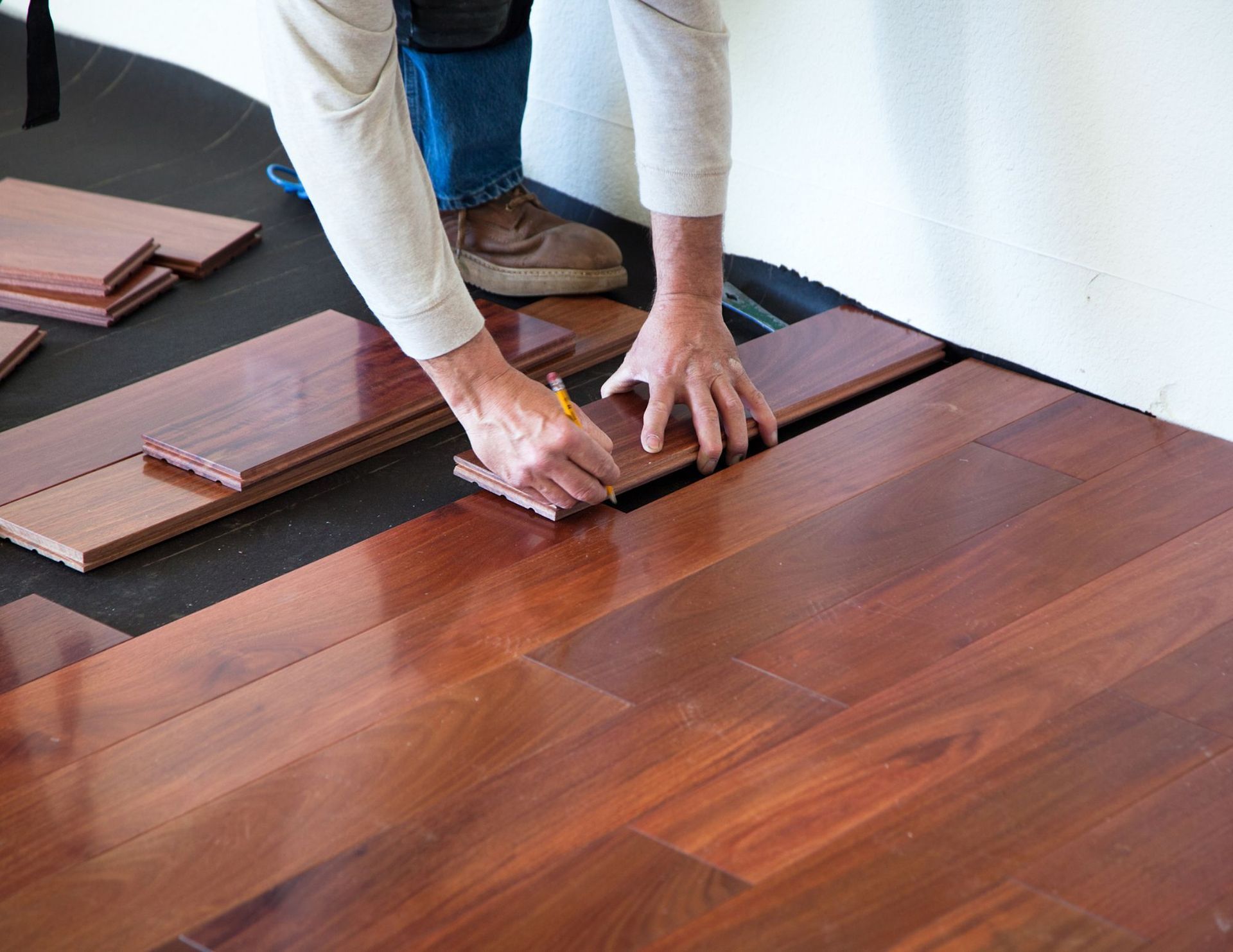Refinishing Pine Flooring
Looking to refinish your pine floors? Learn more here.

Sometimes we are asked if refinishing pine flooring is possible. The answer, in most cases, is yes. Pine is a bit of a softer wood and is slightly more difficult to refinishing and repair. For that reason, it is best left to professionals.
In this article, we are going to cover some of the main questions people ask us about pine floors and how we refinish them at Edmonton Hardwood Floor Refinishing
Types of Pine Flooring
The main types of pine used for hardwood floors are southern yellow pine and heart pine. However, there are plenty of other pines that can be used for floors, and for other purposes around the house. Here are some of the most common types of pine flooring found in North America.
- Eastern white pine
- Western white pine
- Sugar pine
- Red pine
- Pitch pine
- Jackpine
- Longleaf pine
There are many other types that are available, but for the purpose of this article, we are going to focus on the topic of refinishing pine floors.
How is Pine Different From Oak?
Pine is different from oak in terms of its hardness. When it comes to hardwoods, the density and strength of the wood are measured on the Janka Scale. Most types of pine sit below 1000 on the Janka Hardness Scales, while oak is usually between 1100 and 1400.
Pine damages more easily and is a little tougher to refinish because of its softness. There is little room for error when refinishing pine flooring, which is why it is best left to an experienced team.
Oak tends to be a little easier to refinish because there is a larger margin of errors and it is more resilient.
Oak is one of the most popular woods used for hardwood flooring in Canada and the United States. However, in the 1700s and 1800s, pine was often found on the floors of large homes. The main reason for this is its abundance. It was readily available, did not cost as much as many of the other woods, and also, the tools used in those times were more adequate for working with pine instead of oak.
As wood cutting and milling tools have evolved, oak has become much easier to work with.
Sanding Pine Floors
When sanding pine floors, they break down much quicker. Given that pine is much softer, it doesn’t take as much time to sand through pine and for that reason, when sanding and leveling the floor, our contractors need to be a little more meticulous and have higher attention to detail.
Before sanding the floors, you need to make sure that all of the nails are properly countersunk within the wood so that the drum sander doesn’t get damaged. Then the floors need to be sanded as evenly as possible and just below the level of the blemishes.
It is also vitally important to make sure to sand pine in the direction of the grains so that ripples are not created and it is nice and smooth. Around the edges and corners of the room, we use a smaller hand sander that can get a little closer to the walls and keep the finish nice and level.
Once the floor is sanded, you can move onto the next step of treating the floor before it is stained.
Remove The Dust
When we are able to, we offer dustless hardwood floor refinishing for more projects. It is only not possible to do dustless refinishing when the room is not close to the ground floor of the house. If we are unable to bring our dustless equipment, then we need to vacuum up the dust that was created during the sanding process. With pine, there is generally a little more dust than with oak flooring given the hardness differences.
Condition the Pine Floors
Often, we use a type of conditioner on the pine floors before we add stain. This helps open up the pores of the wood and allows the stain to adhere to the pine better. It will require fewer coats of stain and the wood will absorb more of it, giving the floor the best treatment possible.
Using a conditioner, followed by a high-quality sealer helps stop the pine from bleeding resins that are within the pores of the wood. These resins are coloured and sticky and will affect the outcome of the overall project.
Once conditioned, the floors can be stained with the tone of your choice. However, it is important to remember that stain is often not displayed using pine. In most cases, the stain shades are displayed on red oak, and the color will be dramatically different on your pine floors.
Staining Pine Floors
Staining pine floors is the same process as oak or maple. We start in the corners and make sure to work in small sections. We also make sure we are overlapping our brush strokes and coating the floor evenly.
As mentioned before, it is important to try out a few samples of stain on your pin floor type before going ahead with it. Using a brighter stain is best for pine because of how absorbent pine is and how well is shows its lighter colour. The goal is not usually to get a dark, rich colour when using pine for your floors.
After we have conditioned the floor with a high-quality wood conditioner, we will add a few layers of a nice stain to give it a beautiful colour. Then we will coat the floor with a couple of passes of polyurethane to give it a stronger finish and hide any blemishes that still may be hanging around.
Once everything is done, you have a beautifully refinished pine floor that will last for another 10 years without needing to be redone.
Contact Us
We would be happy to speak with you about your pine floor refinishing project and help turn your worn-down floors into the beautiful addition to your home that they once were.
Give Us A Call Today To Receive Your Free Quote
Copyright Edmonton Hardwood Floor Refinishing. 2023 - All Rights Reserved
edmontonhardwoodfloorrefinishing.ca - This is a Lead generation website for local contractors. We do not guarantee the work of the contractor you hire.

